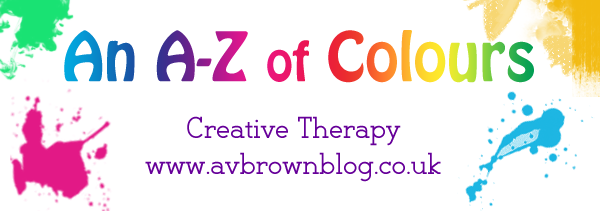Today I’m continuing with the A-Z Blogging Challenge. This year I’m doing an A-Z of Colours. I’ll be doing a variety of posts, including haikus and poems, arts and crafts, fashion and beauty, recipes and more!
Keep reading to discover the symbolism behind these colours, see some lilac artwork and learn more about how lavender is linked to the LGBT rights movement.
Symbolism
Both lavender and lilac represent peace, tranquillity, grace, elegance and femininity. Like other variations of purple, they also symbolise spirituality, but can also symbolise decadence. Lavender is also associated with Easter because of the crocus flower, which blooms in the spring.
The Victorians saw lavender and lilac as a sombre, dignified colour and would switch to clothing of this colour after a year of mourning. Today, a lavender ribbon stands for general cancer awareness and is associated with LGBT rights (see below for more info).
Complementary colour: peach/orange
Animals: Lavender finch, some fish, beetles and insects, lilac-breasted roller birds
Foods: Palma violets, some blueberry flavoured desserts, macarons, purple yams
My Lavender and Lilac Polyvore Creations
Lavender and The LGBT Rights Movement
Lavender has often been associated with the LGBT rights movement. Some people say that it’s because lavender is the colour you get when you mix pink (for girls) and blue (for boys).
Here are some examples:
- Many gay rights activist groups have ‘lavender’ in the name, for example, Lavender Panthers and the Lavender Greens.
- The original gay liberation movement which began in 1969 was known as the ‘lavender revolution’.
- The fear and persecution of homosexuals in the USA during the 1950s was referred to as the ‘lavender scare’.
- The United States Patriots (advocates of gay liberation) pointed out that if you mix red, white and blue, you get lavender.
- On Valentines Day, lavender roses are sometimes given by LGBTs to each other-they’re also popular at same-sex weddings.
- Lavender is the name of a LGBT magazine in Minnesota.
- A ‘lavender convention’ is a convention of homosexuals.
Lavender and Lilac in 19th Century Art
Many painters, such as Eugène Delacroix, Claude Monet, Vincent Van Gogh and Georges Seuret, began experimenting with shades of lavender and lilac to capture the subtle effects of light in the sky and shadows.
 |
| ‘The Time of the Lilacs’, painted by Sophie Gengembre Anderson (1823-1903) |
Do you like lavender and lilac? What do they symbolise for you?








I've also heard the term "lavender marriage", for when two homosexuals of the opposite gender get married.
http://en.wikipedia.org/wiki/Lavender_marriage